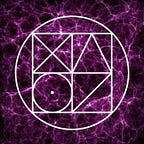Divinatory Methods
Theory and Examples
Divination is defined as the practice of guessing or glimpsing information not consciously known by the practitioner. This information can be provided by various sources, from the unconscious of the magician himself, that is, information that he had already grasped but was not consciously aware of, or even from egregores that are in the etheric plane and are read by means of the divinatory method.
Divinatory methods can also provide a chain linkage of information that is already known, allowing projections about what will happen in the future. However, in most methods of divination it is not necessary to define where the information came from, focusing only on the ways of channeling it to the conscious mind.
Randomness and Interpretation
The two most important aspects of divinatory methods are, in general, the randomness factor, which allows the results to be affected by subtle energies such as egregores and unconscious elements already acquired by the reader, and the interpretive factor, which consists in the ability of the consultant to translate the results of the method into human language, either to understand in practice what is being said, or to explain it to others.
As far as the methods themselves are concerned, they generally have “houses” and “elements”. “Houses” are spatial regions that represent different actors in a situation, sectors of life, or contexts, where the “elements” may fall, forming several combinations that would be the possible outcomes.
Drawing Methods
When carrying out a divination by drawing three Tarot cards, three gypsy cards or three runes, for example, one must first define what represent each of the three “houses” where the elements may appear. There are such methods in which the three houses represent general aspects of a situation or a person, but the three houses can also represent past, present and future, or beginning, middle and end of a day, a week, or a cycle. The “elements,” in turn, will appear in these houses, and in these three divinatory systems specifically, there can be no repetition, since the cards and the runes that have already come out are not returned for a new draw.
There is also the possibility of using more houses, as in the Celtic cross method, with 10 houses representing the situation of the consulent, the element that is blocking him at the moment, the one which is influencing the situation from above, the one which is hidden under the situation, the past, the future, the role of the consultant, the role of others around him, his fears and concerns, and the final result.
IChing
In iChing, there are 4 possibilities of elements: fixed Yin line, mutable Yin line, fixed Yang line, mutable Yang line, which can arise in 6 houses, forming a hexagram with or without mutations. However, in the divination by astral maps, the planets represent the fields or sectors of life (and can be understood as the “houses” in this general classification), and they can appear in 12 different signs, which would be the elements to be interpreted in each context.
Other Methods
In the case of divinatory methods that use free distributions or spatial relations, the “houses” where the elements can be presented would be the positions in the space of analysis. The drawings are interpreted in terms of quadrants, central, right, left, above and below positions, or North, South, East, West directions. In Cowrie-Shell drawings and in divination with bones, the analysis of the quadrants is also combined with the visibility or not of the shells’ openings or with the presence or absence of cracks in the elements of the game.
Detailed interpretations
In addition to the basic interpretations, there are also interpretations that use criteria regarding combinations or relative positions between the elements. In the case of methods that use elements randomly positioned in the reading space, the elements can form symbols, such as in coffee grounds, shadows, clouds or fire readings.
In the case of astral maps, there can be triangulation between planets, among other conjunctions. In the case of the Tarot, the predominance of a suit, or the presence of major arcanas with the same characteristics may have special significance.
Possible Combinations
The more elements and houses, the more combinations possible for reading methods. On the other hand, the interpretations of the elements are more restricted. For example, all situations that could happen in a person’s life are summarized in the 78 cards of Marseille Tarot, but in Futhark these situations are summarized in 24 runes.
In general, it is natural for each rune to encompass a greater volume of meanings than each Tarot card. Thus, the interpretation is more complex as fewer possibilities of final results exist in the method.
By: Xaoz Project.
